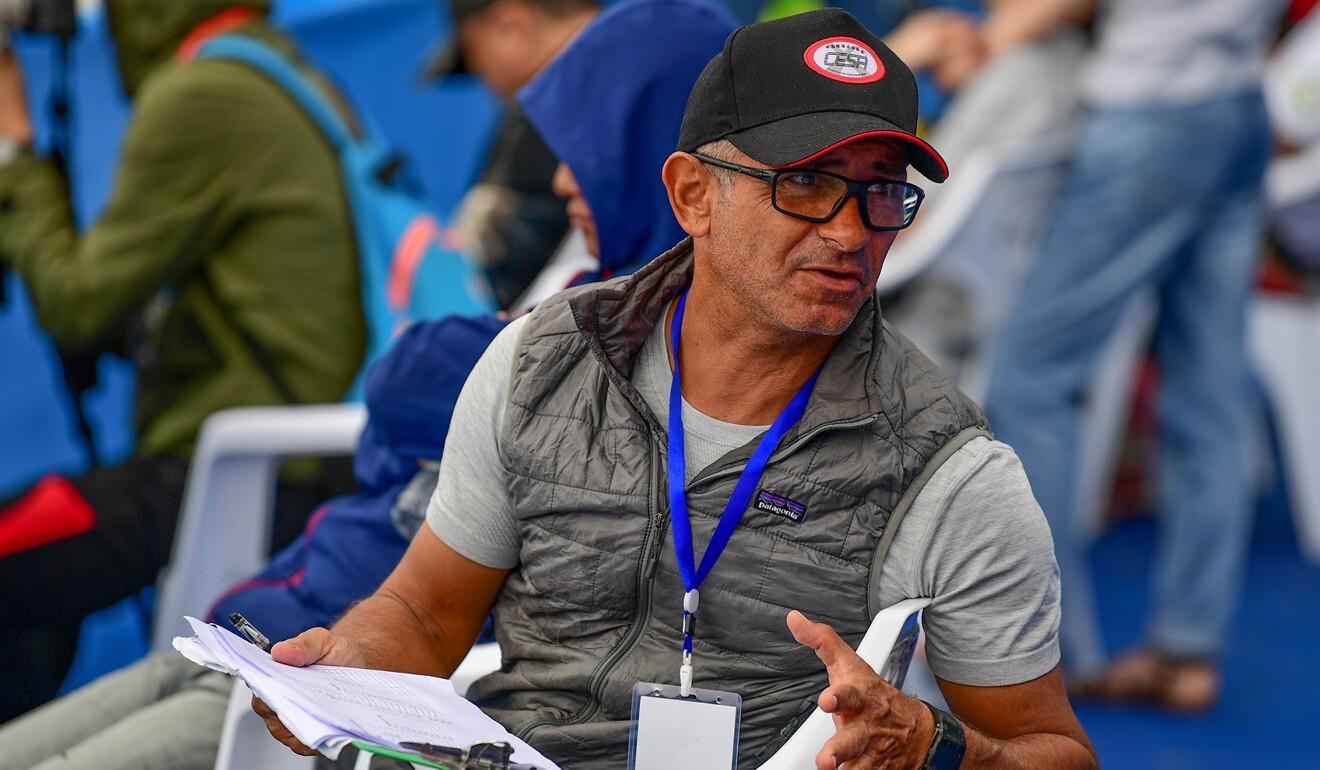
China’s Olympic surfing scout makes waves in North Korea after finding the first break
- Nicola ‘Nik’ Zanella spots a break in North Korea on Google Earth and seeks permission to find the wave and introduce locals to surfing
- The Italian fosters surfing in China and becomes a scout for talent when the sport is added to the Olympics
There may be just one surfer in North Korea, introduced to the sport by an exploring Italian who spotted a break on Google Earth. Now other North Koreans are following suit.
“Nobody likes to surf alone,” said Nicola ‘Nik’ Zanella, coach of Lee Sung-chol, possibly North Korea’s only surfer. “Sung-chol told me that he wished he had people to surf with.”
Zanella, 53, started surfing at 14, part of the “first generation of Italian wave riders”. He mapped out the surfing spots of Italy, explored the waves around the world and then edited a surfing magazine. Zanella, who studied Chinese literature and philosophy at university, started coming to China in the early 1990s, first to learn the language, then to surf.

“In surfing circles, I am known as a surf explorer and the go-to guy for surfing in unusual places,” Zanella said. One day in 2015, he saw images on Google Earth of waves breaking on North Korean shores.
Zanella then pitched the idea of scouting surfing spots to Uri Tours, a US-based tour operator that brings Westerners to the North Korea.
In September 2015, after more than a year of negotiating with North Korean authorities, an eight-person “surfing diplomatic delegation” carrying two longboards, three stand-up paddle boards and a haul of bodyboards, landed in Pyongyang.
The delegation grew with foreign journalists, as well as their North Korean colleagues, learning how to surf while covering the story. “We taught everyone,” laughed Zanella. “This was possibly the most reported surfing trip in the history of the sport, ever.”
At Majon seaside resort on the east coast near Hamhung, Zanella was tasked with preparing the first generation of North Korean surfers. Some joined for fun, but others wanted to learn skills – both surfing and stand-up paddling.

One of these students was Lee. A true surfer must live on the beach and Lee was a lifeguard at Majon. The other future local instructors were two women – Kim Jin-ok and Kim Kook-hwa, but it was Lee who progressed the fastest.
“He is a very good waterman – a very strong swimmer and a diver. He stood up on the board in the first 15 minutes,” said Zanella.
The three were all able to ride small white-water waves after a few days of intensive instruction. They trained twice a day, the first lesson at 6am before their shift at work.

Zanella discovered two beach breaks at Majon. One he named Crystals – after Kim Jin-ok. Her name means “true crystal” and she became the first North Korean surfer to surf that break. Similarly, the second break was called Flowers – after Kim Kook-hwa.
“The hardest part of surfing is reading the waves and positioning yourself in the water – where to sit waiting for waves, knowing what wave is good and in what direction it will take you.” Learning this takes many hours spent in the ocean.
Zanella only had a week. At the end of the course, while at a seafood beach barbecue and drinking the local beer, Zanella announced the opening of Majon Surf School.

After receiving instructions and boards from Zanella, Lee was left to his own devices. The student and teacher did not see each other for two years.
When the they were reunited, Lee was a surfer who could read the waves. “He was catching unbroken waves – this is the goal when you surf,” said Zanella.
“He told me that he surfed a lot in his free hours after work. But the way you surf tells me more – by his improvement I knew he had surfed many, many hours. He could use the rip to go out, he could cut across waves, and learning that takes time. He also showed me his favourite board.”
The two Kims also continued to surf, but not as much, or as well as Lee, said Zanella. Then, on Zanella’s third visit to North Korea, they were not working at Majon any more.
It has been three years since Zanella’s last visit.
“Last time we went back, people at Majon were doing it – trying surfing, stand-up paddling,” he said.
Zanella added that he would like to see his North Korean students again and check on their progress. “I think the surfing seed there is germinating. It is hard for it not to, if there are waves,” he said.

